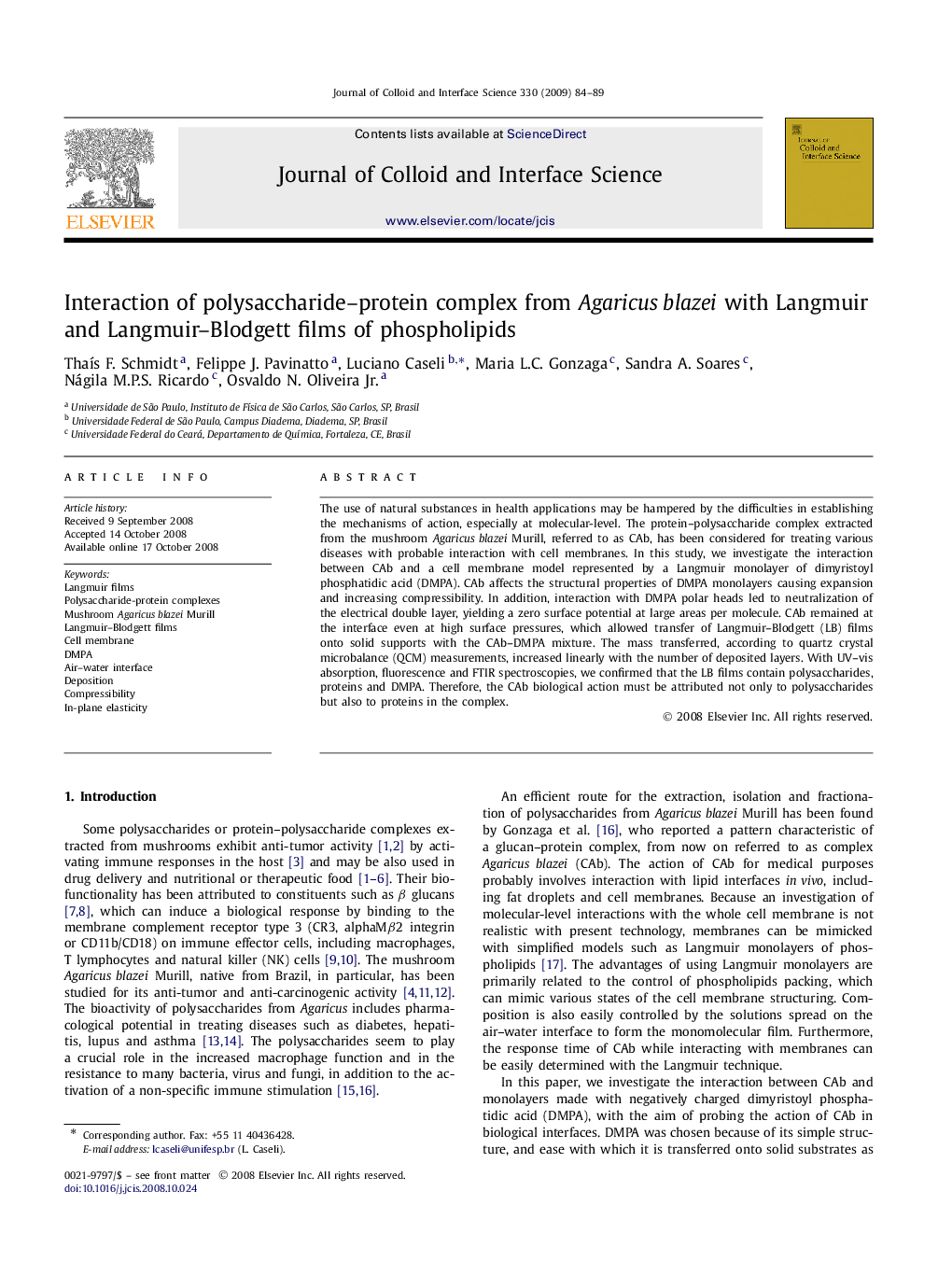| Article ID | Journal | Published Year | Pages | File Type |
|---|---|---|---|---|
| 610790 | Journal of Colloid and Interface Science | 2009 | 6 Pages |
The use of natural substances in health applications may be hampered by the difficulties in establishing the mechanisms of action, especially at molecular-level. The protein–polysaccharide complex extracted from the mushroom Agaricus blazei Murill, referred to as CAb, has been considered for treating various diseases with probable interaction with cell membranes. In this study, we investigate the interaction between CAb and a cell membrane model represented by a Langmuir monolayer of dimyristoyl phosphatidic acid (DMPA). CAb affects the structural properties of DMPA monolayers causing expansion and increasing compressibility. In addition, interaction with DMPA polar heads led to neutralization of the electrical double layer, yielding a zero surface potential at large areas per molecule. CAb remained at the interface even at high surface pressures, which allowed transfer of Langmuir–Blodgett (LB) films onto solid supports with the CAb–DMPA mixture. The mass transferred, according to quartz crystal microbalance (QCM) measurements, increased linearly with the number of deposited layers. With UV–vis absorption, fluorescence and FTIR spectroscopies, we confirmed that the LB films contain polysaccharides, proteins and DMPA. Therefore, the CAb biological action must be attributed not only to polysaccharides but also to proteins in the complex.
Graphical abstractSchema for the protein–polysaccharide complex from Agaricus blazei adsorbing from a buffer subphase at a cell membrane model: phospholipid Langmuir monolayer formed at the air–water interface.Figure optionsDownload full-size imageDownload as PowerPoint slide
